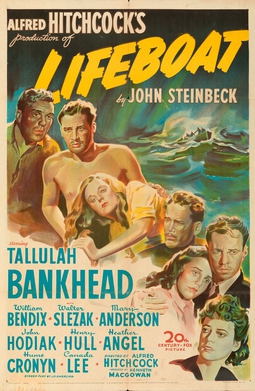 |
| Ann Todd and Charles Laughton in The Paradine Case |
Gay Keane: Ann Todd
Lord Thomas Horfield: Charles Laughton
Simon Flaquer: Charles Coburn
Lady Sophie Horfield: Ethel Barrymore
Andre Latour: Louis Jourdan
Maddalena Anna Paradine: Alida Valli
Sir Joseph: Leo G. Carroll
Judy Flaquer: Joan Tetzel
Director: Alfred Hitchcock
Screenplay: David O. Selznick, Alma Reville, James Bridie
Based on a novel by Robert Hichens
Cinematography: Lee Garmes
Production design: J. McMillan Johnson
Alfred Hitchcock was at the end of his seven-year servitude to David O. Selznick when he was roped into The Paradine Case, a project Selznick had been nursing since 1933, when he bought the rights at MGM hoping to star Greta Garbo as the "fascinating" Mrs. Paradine. Garbo declined then and later, saying she didn't want to play a murderer. Hitchcock's involvement in the belated project was grudging, given that the other two features, Rebecca (1940) and Spellbound (1945), on which he had been forced to work directly with Selznick had been difficult experiences, producer and director having decidedly different views on almost everything about filmmaking. But he went ahead with crafting a screenplay, enlisting his wife, Alma Reville, playwright James Bridie, and Ben Hecht. In the end, however, Selznick rewrote the screenplay, sometimes after individual scenes had been shot, and claimed credit, relegating Reville to "adaptation" and Bridie to "treatment in consultation with," and leaving Hecht off the credits entirely. Moreover, Hitchcock's initial cut was three hours, which Selznick then scissored down to 132 minutes and after premieres to the extant 114 minutes. It's hard to say what was lost in the process, except that Anthony Keane's supposed erotic fascination with Mrs. Paradine barely registers in the current version, making Gay Keane's jealous moping almost nonsensical. It also robs the climax of the film of any real emotional impact. But miscasting also may be responsible for those failures: Gregory Peck, never a very interesting actor, becomes even duller in his attempts to play a distinguished British barrister. Peck was 31, and the gray streaks in his hair do little to convince us that he's a man with a long career at the bar. Moreover, his attempts at a British accent are fitful: You can almost see him tense up every time he has to pronounce "can't" as "cahn't." Alida Valli, in the key role, is more sullen than mysterious, and Ann Todd as Peck's wife, is pallid. What life exists in the film comes from Charles Coburn as the solicitor in the case and from Charles Laughton, deliciously haughty as the judge, with a reputation for enjoying hanging women as well as clear evidence of his sexually predatory nature when he makes his moves on Mrs. Keane. Ethel Barrymore for some reason was nominated for an Oscar for her small role as the judge's wife, who sweetly admonishes her husband for his ways, but otherwise has little to do. There is not much Hitchcock could do stylistically in the film with Selznick hanging around: He attempts some impressive long takes, many of which Selznick chopped up in the editing room, and an experiment in collaboration with cinematographer Lee Garmes in lighting changes during Keane's interrogation of Mrs. Paradine. He also introduces Louis Jourdan's character by keeping him in shadows and half darkness, to heighten our suspicion of the character's nature, but such occasional tricks only stand out from the general flatness of the drama.








